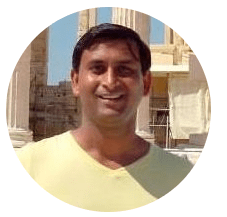De-centralizing the Central Dogma: Gating of central clock signals prevents muscle aging
Daily tissue functions rely on a network of molecular clocks that are necessary for organism health but can be disrupted by aging and lifestyle changes. Communication of these tissue clocks and their temporal coordination are essential for maintaining organism health. The mechanisms accounting for the communication needed for daily coherent physiology during an individual’s life, and whether (and how) intra-tissue clocks networks are important for muscle tissue maintenance, have remained practically unknown.
Here, we addressed the open question of how the brain and muscle clock interact to maintain correct daily muscle physiology, and whether disruption of any such communication leads to aging phenotypes in muscle. To elucidate the structure of this network, we established a minimal clock module with the central clock (suprachiasmatic nucleus [SCN]/brain) and/or a peripheral clock (muscle) in arrhythmic, prematurely-aged mice. Unexpectedly, we observed that brain-muscle clock network reconstitution suffices for preserving basic daily homeostatic functions and preventing premature muscle aging, but input from other peripheral clocks is required for full daily physiology. Mechanistically, the muscle peripheral clock acts as a gatekeeper by selecting and suppressing signals from the central clock, such as untimed lipid metabolism and mitochondrial homeostasis, which would be detrimental to muscle function if left uncontrolled, and by integrating the muscle homeostatic functions. This gatekeeping function of the peripheral clock over the central clock was key in preventing sarcopenia, uncovering a less hierarchical organization than previously proposed. In normally aged mice, the central clock fails with declining activity.
Strikingly, failure of the central clock in normally aged mice (and in young mice lacking the central clock) can be rescued by imposing a feeding regime associated with correct circadian rhythm (e.g., time-restricted feeding) which drives the muscle clock autonomously, thus restoring circadian functions and preventing sarcopenia. Our findings reveal reciprocal interactions of the central and peripheral clocks that are required for the daily function of muscle and that can be drastically influenced by eating patterns, with implications for fostering healthier aging and reversing age-related muscle pathologies.
Pour en apprendre davantage

CHERCHEUR, Department of Experimental and Health Sciences, Pompeu Fabra University (UPF),CIBER on Neurodegenerative Diseases (CIBERNED)
